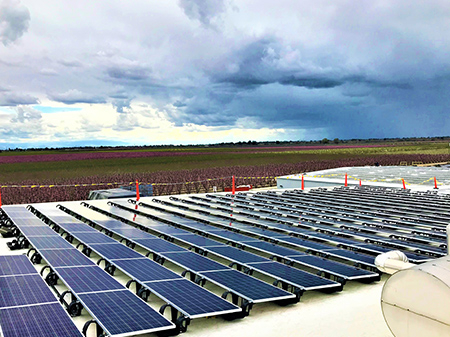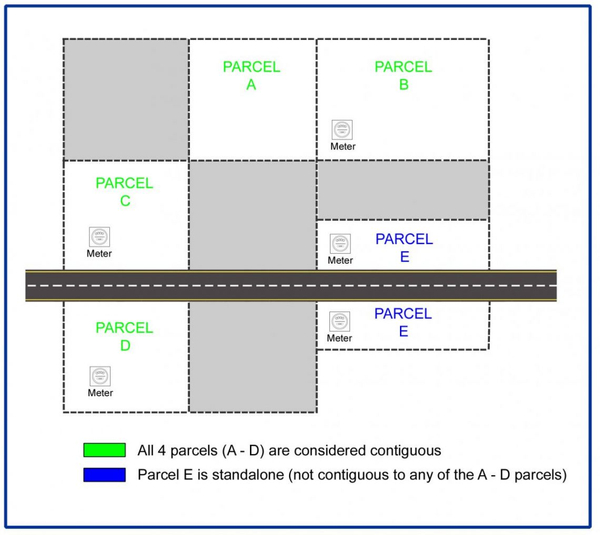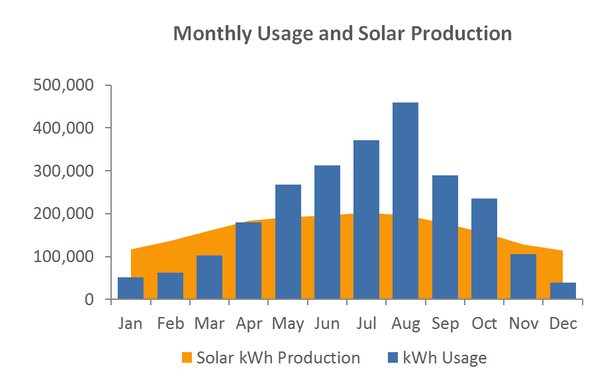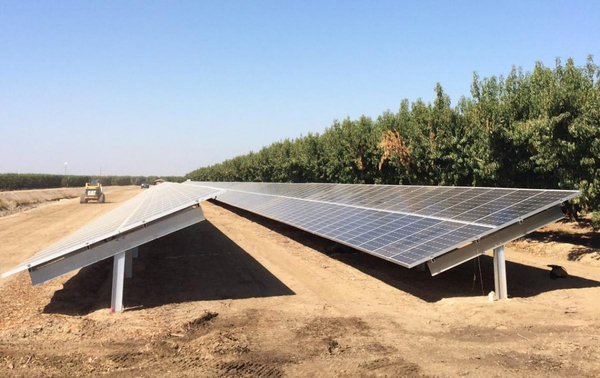Aggregated Net Metering
Premier Renewables
- The Premier Agricultural, Commercial, and Industrial Solar Company
In Southern and Central California


How Commercial Solar Systems Work
Aggregated Metering Program
The three large electricity utility companies in California (PG&E. SCE. and SD&E) recently introduced a new program that allows customers to install solar systems and connect them to one electricity meter, but associate the solar electricity generated to multiple electricity meters.
KEY DEFINITIONS
Below are some of the key definitions related to the solar energy program:
- NEM – Net Energy Metering, i.e. the ability to send solar-generated electricity back to the utility company for a dollar credit that can be used later
- Generating Meter – the single electricity meter to which the solar systems are directly connected
- Arrangement – A collection of meters that receive the value of the solar electricity produced
- Contiguous Parcels – an unbroken chain of land parcels solely owned/leased/rented by the same person or entity
Other resources regarding solar power and electricity meters in California: PG&E, SCE, and SDG&E.

PROGRAM CHARACTERISTICS
Important aspects of the NEM Aggregation program include:
- There is no limit to the number of electricity meters that can be associated to a single solar power system arrangement, however:
- All meters must be on a single parcel, or on multiple contiguous parcels
- The maximum solar PV system size for any one arrangement is 1MW, but multiple 1MW arrangements are allowed
- Public thoroughfares, such as highways, do not “break the chain” of contiguous parcels
- Individual meters can be added or removed from an arrangement at any time
- All meter types and rate schedules can be included in an arrangement: commercial, agricultural, residential, etc.
- The utility company might allow a new electricity meter to be installed at the PV system site
HOW IS THE ELECTRICITY GENERATION ALLOCATED?
When the solar energy system arrangement is first turned on, for the next 12 months (and for every 12-month period thereafter) the utility company will allocate the solar electricity to the meters based on the proportion of each meter’s total kWhs used each month.
Because the meters’ dollar balances fluctuate throughout the year, the user pays the net energy charges to the utility company only at the end of the 12-months, not monthly.
- One centralized solar energy system
- Offsetting multiple meters
- Meters can be added or removed anytime

LAND PARCELS
In the illustration below, the unshaded land parcels are all solely owned, leased, or rented by the same individual/entity. Note the following:
- Parcels A, B, C, D are considered contiguous
- Parcels that touch only at a corner (parcels A and C) are considered contiguous
- Parcel E is not contiguous to any of Parcels A-D, but as a standalone parcel it is still eligible for one or more of its own solar system arrangements
- Roads don’t divide a parcel or break a group of parcels; parcels C and D are still contiguous, and both meters on Parcel E can be grouped
- A parcel without a meter on it still constitutes a part of an unbroken chain (Parcel A)

WHY CHOOSE PREMIER RENEWABLES
The major utility companies in Southern and Central California use a complicated formula to determine solar kWhs allocation. Because the effect that the kWh allocation formula will have on a particular arrangement of electricity meters is not intuitive, it’s imperative that a thorough assessment is performed using your actual data.
Premier Renewables can provide this solar system analysis for you, using our own proprietary software models, to ensure that you get the most value out of a particular meter arrangement.

AGGREGATED METERING CASE STUDY
Excelsior – Hanford, CA – 200kW
This agricultural solar project was installed under PG&E’s new aggregated metering program. The 200kW PV system interconnects at one meter but produces enough solar energy to offset three separate well pump meters on the property. The customer is able to reduce all electricity bills for their agricultural operation with a single solar PV system. If you are interested in seeing if this program would work for you, contact us today.
Agricultural operations that are considering installing a solar power system while maximizing their ROI should act quickly. Aggregated metering is required to be offered by electrical utility companies only until the total capacity of renewable energy generated surpasses 5% of the utility’s aggregated demand. The capacity is quickly increasing and will only continue to accelerate with aggregated metering as an option. Reach out to us today to learn more and get your free project proposal!
Contact Premier Renewables Today!
Schedule a free estimate with us today.
